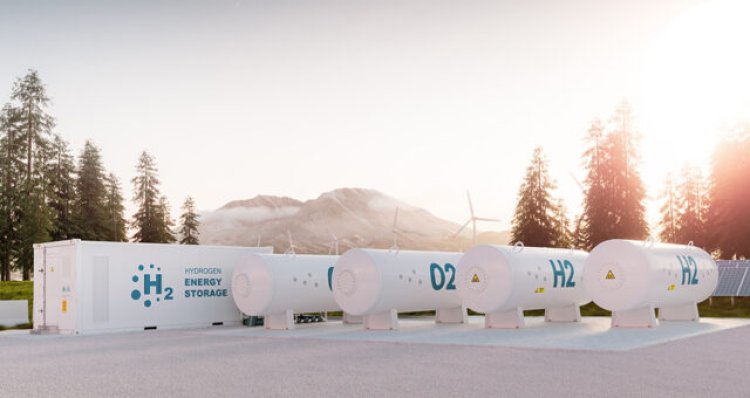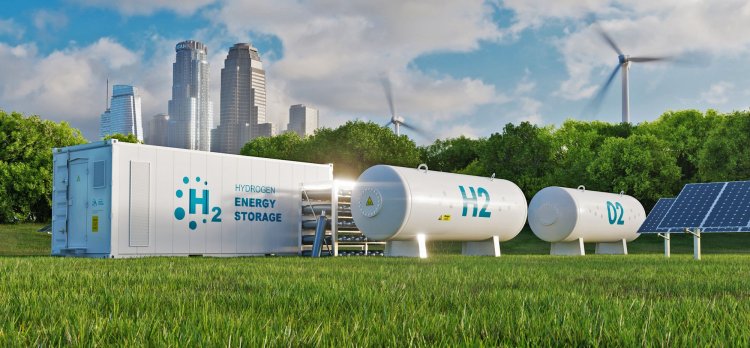A startup is designing more efficient tanks made of nanomaterials to store hydrogen

“H2MOF” believes nanomaterials designed to capture hydrogen and store it at low pressure, similar to a sponge absorbing water, are a cheaper and more efficient way to store and transport fuel.
Hydrogen is one of the most promising forms of carbon-free energy, but transporting and storing the element is expensive and energy-intensive.
So "H2MOF" a startup company launched last year and co-founded by two prominent chemists, including a Nobel Prize-winning scientist, is designing a new type of tank made of nanomaterials that is cheaper and safer than anything currently in use, and has the capacity to store more of hydrogen.
zero-emission fuel
Irvine, California-based H2MOF is looking to sell its next-generation hydrogen tanks later after 2024 to heavy-duty vehicle manufacturers, with plans to offer zero-emission fuel cell vehicles.
In addition to storing fuel inside vehicles, these tanks will also provide a better way to transport fuel by truck or train, especially as truck makers shift toward using hydrogen to power carbon-neutral fleets, according to the company.
Instead of pumping liquefied or highly pressurized hydrogen into a conventional tank, H2MOF designs a tank that holds the energy-rich fuel in a solid state, to be absorbed by specially designed nanomaterials. This approach is based on research conducted by two of the company's corporate partners and scientific advisors: Omar Yaghi, a professor of chemistry at the University of California, Berkeley, and Sir Fraser Stoddart, the 2016 Nobel Prize winner in chemistry.

Hydrogen storage
“We have not achieved breakthroughs in hydrogen storage because of the very difficult properties of the hydrogen molecule,” said Samer Taha, CEO and co-founder of the company.
He continued: “Scientists Stoddart and Yaghi believe that it requires us to delve deeper into the problem and design new materials with atomic precision to reach the correct solution, since traditional techniques will not work.”
H2MOF is testing prototypes made of crystal-like materials designed to capture and store hydrogen atoms like a sponge absorbs water. Unlike the carbon fiber-covered tanks used in Toyota's Mirai fuel cell sedan, which stores hydrogen at 10,000 psi — the pressure hydraulic rescue tools use to cut off car doors in accidents — the H2MOF intends to pressurize its tank at a rate lower than 300 psi.

Chemical industry
Storing more fuel at lower pressure means a significant reduction in cost. Taha estimates that switching from high-pressure tanks to the company's technology could save $12,000 a year in energy expenses needed to operate a fuel cell transit bus, for example. In the case of Toyota, H2MOF technology can double its range of 350 miles per fueling by storing more hydrogen without increasing the vehicle's weight.
Hydrogen is used extensively in oil refining, fertilizer production and the chemical industry, while most of it is produced using steam to extract the element from natural gas, emitting carbon dioxide in the process. CO2-free hydrogen production using electrolyzers - such as those sold by Plug Power and Cummins' accelera unit - is becoming more widely available, while other startups plan to extract it from the sea (e.g. Equatic) or through drilling (e.g. Koloma).


 Shrouq
Shrouq 












